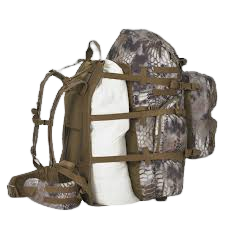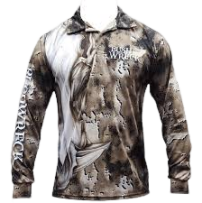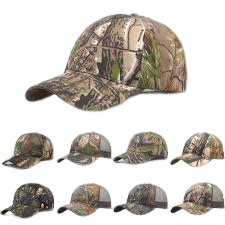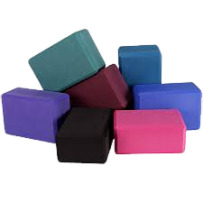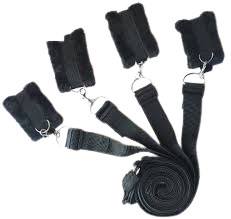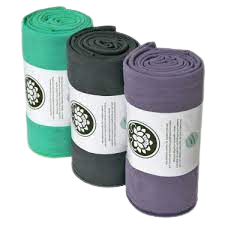The Art and Science of Hunting Camouflage: Blending In for Success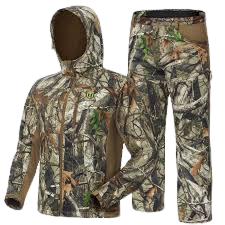
Introduction
Hunting camo, an age old practice deeply rooted in our history, has evolved over the years. Today, it’s not just about skill and precision; it’s also about mastering the art of concealment. Enter hunting camouflage, a crucial aspect of the modern hunter’s toolkit. In this article, we will delve into the intricacies of hunting camouflage, exploring its history, the science behind it, and the various types available to hunters today.
The Evolution of Hunting Camouflage
Hunting camouflage has come a long way from the primitive methods used by our ancestors. Early hunters relied on natural materials like animal hides and foliage to blend into their surroundings. As societies progressed, so did the techniques of concealment. The 19th century saw the introduction of military inspired camo patterns during the Boer War, setting the stage for the incorporation of camouflage in hunting.
Fast forward to the 20th century, and the use of camouflage in hunting became more sophisticated. Camouflage patterns designed for different terrains and seasons began to emerge, providing hunters with more effective ways to hide from their prey. Today, hunting camouflage is a multi million dollar industry, with advancements in technology playing a pivotal role in its development.
The Science of Camouflage
Camouflage is not merely about looking good in the wild; it’s a science. Understanding the vision of the animals being pursued is crucial in designing effective camouflage. Different animals perceive colors and patterns differently, and successful camouflage takes these factors into account.
-
Color Matching
Animals often see colors differently than humans. For example, deer are believed to be red green colorblind. Effective hunting camouflage takes this into account, using color schemes that blend seamlessly with the natural surroundings as perceived by the target species.
-
Pattern Disruption
Camouflage patterns are designed to break up the hunter’s silhouette, making it harder for prey to detect them. This involves using a combination of shapes and colors that disrupt the natural lines and contours of the human body.
-
Texture and Contrast
Mimicking the textures of the environment, such as leaves, bark, or grass, adds another layer of concealment. Additionally, managing the contrast between light and dark areas in the pattern is crucial for creating a realistic and effective camouflage.
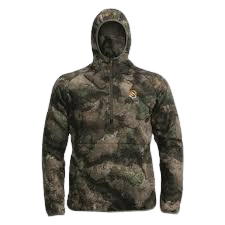
Types of Hunting Camouflage
The market offers a diverse array of hunting camouflage, each designed for specific environments and conditions. Understanding the different types can greatly enhance a hunter’s ability to remain unseen.
-
Woodland Camouflage
Designed for forested environments, woodland camouflage typically features a mix of browns and greens to mimic the colors of trees and foliage. This pattern is effective in dense forests during spring and summer.
-
Desert Camouflage
For arid landscapes, desert camouflage employs lighter colors such as tan and beige. The goal is to blend into the sandy environment prevalent in desert regions.
-
Snow Camouflage
In snowy conditions, traditional patterns become counterproductive. Snow camouflage usually consists of whites and light greys to help the hunter disappear into the snowy backdrop.
-
Brush Camouflage
This type of camouflage is designed for areas with low lying vegetation and brush. It often incorporates earthy tones and subtle patterns to match the ground cover.
-
Camo for Specific Game
Some camo patterns are tailored for specific game. Waterfowl patterns, for instance, might include elements that mimic the reflections on water, while turkey hunting camo might incorporate colors that match the springtime foliage.
Technological Advancements in Camouflage
As technology continues to advance, hunting camouflage has not been left behind. Innovations such as scent blocking fabrics, noise reducing materials, and even high tech ghillie suits have revolutionized the way hunters approach concealment.
-
Scent Control
Many modern camouflage garments come equipped with scent control technology. This is essential, as many animals rely heavily on their sense of smell. Scent blocking fabrics help hunters stay undetected by minimizing human odor.
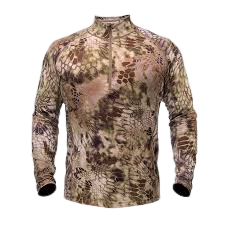
-
Noise Reduction
Movement and noise can give away a hunter’s position. Camouflage materials are now designed to reduce noise, allowing hunters to move more stealthily through the woods without alerting their prey.
-
Adaptive Camouflage
Some cutting edge camo patterns are designed to adapt to different environments. These patterns change color and intensity based on the surrounding conditions, providing a versatile solution for hunters in varied terrains.
Choosing the Right Camouflage
Selecting the right camouflage for a hunting expedition involves considering various factors.
-
Terrain
The first consideration should be the terrain where the hunt takes place. Woodland camouflage is ineffective in a snowy landscape, and desert camouflage would stand out in a dense forest.
-
Season
Seasons greatly impact the colors of the natural environment. Opt for patterns that match the predominant colors of the season to stay concealed effectively.
-
Game Species
Understanding the vision and behavior of the specific game being pursued is crucial. Some animals are more sensitive to certain colors, and tailoring your camouflage to their vision can significantly improve your chances of success.

-
Weather Conditions
Weather can alter the appearance of the surroundings. Consider patterns that work well in both sunny and overcast conditions.
Camouflage Maintenance and Proper Use
Owning quality camouflage is not enough; proper care and usage are essential for its effectiveness.
-
Regular Cleaning
Camouflage can lose its effectiveness if not kept clean. Regularly washing it with scent free detergent can help eliminate human odors that may be absorbed by the fabric.
-
Layering
Layering is key for adapting to changing weather conditions. Invest in a variety of garments, allowing you to add or remove layers as needed.
-
Movement Awareness
No matter how effective your camouflage is, excessive movement can still give away your position. Practice slow and deliberate movements to avoid startling game.

The Ethics of Camouflage: Balancing Sport and Conservation
While the primary purpose of hunting camouflage is to enhance the hunter’s ability to remain undetected by game animals, ethical considerations also come into play. As hunters, it is our responsibility to engage in ethical and sustainable practices that contribute to the conservation of wildlife populations.
-
Respect for the Environment
Camouflage is a tool for engagement with nature, and it should be accompanied by a deep respect for the environment. Hunters should strive to leave minimal impact on the ecosystems they traverse, adhering to principles of Leave No Trace.
-
Selective Harvesting
Ethical hunters practice selective harvesting, targeting specific individuals within a population to maintain a healthy balance. This approach ensures the long term sustainability of wildlife populations and helps preserve biodiversity.
-
Conservation Funding
Many hunters contribute significantly to conservation efforts through the purchase of hunting licenses and equipment. Understanding the correlation between hunting and conservation helps to foster a sense of responsibility among the hunting community.
Cultural Perspectives on Camouflage: Tradition and Innovation
Across different cultures, the use of camouflage in hunting often reflects unique traditions and innovation. Indigenous communities, for example, have a long history of using natural materials and traditional patterns for concealment. Exploring these cultural perspectives can provide valuable insights into the diverse ways in which humans have adapted to their environments.
-
Indigenous Camouflage Techniques
Indigenous communities around the world have developed their own camouflage techniques based on the specific environments they inhabit. These techniques often involve a deep understanding of local flora and fauna, showcasing a profound connection between culture and the natural world.
-
Innovation in Modern Hunting
Beyond traditional methods, modern hunters also draw inspiration from indigenous knowledge while incorporating cutting edge technology. The fusion of tradition and innovation is evident in the development of advanced materials and patterns that optimize concealment.

The Future of Hunting Camouflage: Trends and Innovations
The world of hunting camouflage is dynamic, with continuous advancements driven by technology, research, and market trends. As we look to the future, several exciting developments are on the horizon.
-
Smart Camouflage
Emerging technologies like smart textiles are being explored for their potential application in hunting camouflage. These textiles could adapt to changing light conditions, providing hunters with an unprecedented level of concealment.
-
Biometric Camouflage
Some researchers are exploring the concept of biometric camouflage, which mimics the textures and patterns found in nature at a microscopic level. This approach could revolutionize concealment by creating patterns that are even more convincing to the keen eyes of wildlife.
-
Environmentally Friendly Materials
With a growing emphasis on sustainability, there is a trend toward developing camouflage materials that are environmentally friendly. Biodegradable fabrics and eco conscious manufacturing processes are becoming more prevalent in the hunting camouflage industry.

Conclusion
In the realm of hunting camo, where the balance between predator and prey is a delicate dance, the art of disappearance is a skill honed through the mastery of camouflage. From its humble beginnings in the use of natural materials to the high tech innovations of the present, hunting camouflage has evolved into a sophisticated discipline that goes beyond aesthetics.
To be a successful hunter is not merely about donning the right patterns and colors; it’s about understanding the environment, respecting the quarry, and embracing the ethical responsibilities that come with the pursuit. As we venture into the future, the evolution of hunting camouflage will continue to be driven by a fusion of tradition, innovation, and a deep appreciation for the natural world. In this dynamic landscape, hunters will continue to refine their ability to disappear into the tapestry of nature, ensuring a harmonious coexistence with the wild creatures that roam our vast and diverse landscapes.

